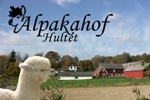Articles by Alpaca World Magazine:
Parasitism.
Alpacas are subject to infestation with a number of intestinal parasites common to both Sheep and Cattle. Along with these they are also subject to some more specific worms such as the relatively recently found Camelostrongylus. There have been few published studies done to look at the extent of parasitism and its effects on Alpacas in New Zealand so it is not easy at this stage to state with confidence which of the common parasites found here are the most detrimental or prolific within the United Kingdom Alpaca population however work is being undertaken on this at the moment through the VLA. Different areas of the country will be subject to different worm problems, the dry warm conditions occasionally found around the South East for example could be expected to result in fewer worm problems than in the north; conditions here being wetter and more conducive to worm survival. Of those papers that have been published, they would suggest that Alpacas are slightly less susceptible to parasitism than sheep, however, the broad range of worms found with in the Alpaca faeces would suggest they can play host to both cattle and sheep parasites.
When we think about worms, it is quite common to think of the worms within the animal as being the problem, and to a point they are. Worms within animals are the visible problem; it?s what we see as scouring alpacas, loss of condition and failure to thrive.
However, the worms that are causing the damage within the animals are only about 10% of the actual worm population.
Where is the other 90% of the population then?
They can be found in the pasture on which the animals are grazing, either as eggs, or the more dangerous stage three infective larvae. They hide in our pastures waiting to be taken up by the unsuspecting animals as they graze.
It would be easy to assume that if they are on the pasture and not actually in the animals themselves then what harm can they do? The harm comes from the rate at which they are ingested following drenching and the speed with which the gut can become repopulated with worms after the ?annual? or ?biannual? drench. It can take as little as 10 days before worm burdens within the gut have started to cause damage to the gut lining again, even following an effective drench! If the pasture that the Alpaca has been grazing, post drenching, has a high level of contamination with infective larvae, a 10 day respite is all the drench has achieved. It is therefore paramount that, together with regular drenching, appropriate management techniques are employed to control pasture contamination levels and thereby get the most out of your drench.
These techniques can include:
? Moving animals onto clean pasture following drenching. (this can encourage worm resistance)
? Ensuring that correct and adequate drenching doses are used (check that drench guns for oral drenches are delivering the required dose by squirting a ?dose? into a measuring cylinder, check it for five consecutive doses).
? After drenching hold the animals penned for around four to six hours to allow the drench to start to take effect before release onto clean pastures. This is more important with injectable drenches and free access to clean water should be available while being held off feed.
? Drenching should be done at regular intervals which under intensive stocking rates could be as frequent as every 6 weeks (needs will vary depending on numbers of alpacas)
? Pick up the faeces in a paddock after the animals move on. In summer harrow the paddock to break up the faeces and allow for desiccation of the larvae (this may facilitate spread of worms over the cooler winter months or when rain is frequent so restrict it to the warmer summer months).
? Quarantine any animals being introduced to your mob. Drench them as soon as they arrive on your property irrespective of when they were last drenched. Keep them separate from your own animals for at least a week (by doing this you can also observe for any additional health problems and prevent rapid spread to the existing animals). This land should then not be grazed by any other livestock that are resident on the farm. Preferably it would be a housed area with removable bedding (straw/sawdust) that can be mucked out and disinfected after the animals have been allowed into the general population.
? Bringing animals in and yarding them for a period of up to 24 hours prior to using an oral drench may help to increase the efficacy of the drench used, again, access to clean water while in the yard is essential.
? If using an oral drench that requires a high volume, split it into two doses (if a 10ml dose is required give two doses of 5ml) this may help to prevent it being spat back out at you!
But what Drench do I choose?
Choice of drench is ultimately up to the Alpaca owner as he or she will be the one giving it. As a general rule of thumb however it is important to choose a drench that will work!
Pour on drenches are not recommended for Alpacas as Alpacas have a skin that is thicker than the animals for which pour on drenches were devised therefore they do not penetrate effectively and results can be quite variable.
That leaves oral and injectable drenches. If using an oral drench the ones to be cautious of are those containing Levamisole (?clear drenches?).This is due to the low safety margin of this product at normal dose rates which would be lower still at the 1.5x dose rate. They do work well but care in administering them at accurate dose rates must be taken.
Injectable products must all be given subcutaneously (SQ). Ivomec as a product tends to sting the most when administered.
An unpublished trial undertaken in New Zealand showed that Dectomax? (Pfizer) at a dose rate of 0.5mg/kg was effective at eliminating worm burdens in a mixed age group of Alpacas. This dose rate was equivalent to 3ml/adult animal (previous recommendations of 2ml). Although quite a high dose, this product has a wide safety margin in most species, a definitive safety margin however has not been established for Alpacas.
It is important to remember that no products available for the treatment of Alpacas in the UK are registered for use in this species; therefore all use is strictly off label and subject to owners consent
It is worthwhile remembering that there is no hard and fast rule for the treatment of worms in your camelids (Llamas or Alpacas). It is highly dependant on your farm and your management practices as to what will be required. It is therefore worthwhile talking to your vet to determine what is the best approach for you.
Faecal egg counts are highly advisable and should be done at least once a year to determine what sort of worm burdens your animals are carrying as this will give you some indication of the level of infection they are being subject to and the level of pasture contamination that may be occurring. This can be done through the VLA laboratories via your vet. It is important to stress to your vet to ask for the sensitive test (egg counts done down to 1-10 eggs per gram) as the standard test will only check down to 50 eggs per gram of faeces.
Separate requests must be made for fluke eggs and for coccidia when submitting samples to the VLA. If your vet is doing the testing ?in house? then please ask them to use a fluid with an increased specific gravity (S.G.) of 1.3 if possible. If not then please ask for them to send the samples away on occasion to the VLA to ensure they are counting correctly!
Tweet


